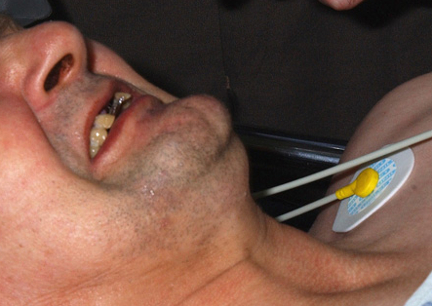Summary
Definition
History and exam
Key diagnostic factors
- antecedent tetanus-prone injury
- tetanus immunisation status
- trismus (lock jaw)
- back pain
- muscle stiffness/increased tone
- dysphagia
- spasms
Other diagnostic factors
- people who inject drugs
- respiratory distress
- labile blood pressure, pulse rate, and temperature
- sweating
Risk factors
- incomplete tetanus immunisation
- injury
- aseptic obstetric practices
- people who inject drugs
- asterile intramuscular injection
- abdominal surgery
- acupuncture, ear piercing, pedicures, toothpicks
- necrotic tumours
- middle ear infection
Diagnostic investigations
Investigations to consider
- clinical diagnosis
- serum toxin
- Clostridium tetani detection from wound tissue or swab
- serum antitoxin antibodies
- spores on drug samples or paraphernalia
- lumbar puncture
- electroencephalogram
- electromyogram
Treatment algorithm
Contributors
Authors
Russell W. Steele, MD
Clinical Professor of Pediatrics
Tulane University School of Medicine
New Orleans
LA
Disclosures
RWS declares that he has no competing interests.
Acknowledgements
Dr Russell W. Steele would like to gratefully acknowledge Dr Christopher M. Parry, Dr Nicholas J. Beeching, Dr Lucy E. Cottle, and Professor Enitan D. Carrol, the previous contributors to this topic.
Peer reviewers
Louise Thwaites, BSc, MBBS, MD
Senior Clinical Research Fellow
Oxford University Clinical Research Unit
Hospital for Tropical Diseases
Ho Chi Minh City
Vietnam
Centre for Tropical Medicine and Global Health
Oxford University
Oxford, UK
Disclosures
LT is an author of a number of references cited in this topic.
Katrina Kretsinger, MD, MA
Commander
U.S. Public Health Service
Medical Epidemiologist
HIV Vaccine Team
Epidemiology Branch
Division of HIV/AIDS Prevention
National Center for HIV/AIDS, Viral Hepatitis, STD, and TB Prevention
Centers for Disease Control and Prevention
Atlanta, GA
Disclosures
KK declares that she has no competing interests.
Use of this content is subject to our disclaimer
